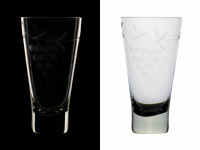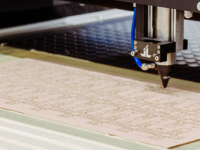Materials that cannot be processed with a laser
Only for a few materials the processing with a laser is not recommended
We have already presented an overview of those materials that can be processed with a laser engraver and laser cutter from JustLaser. However, there are also materials that cannot be processed satisfactorily or at all with a laser.
The following list includes materials that must not be processed with a laser or can only be processed to a limited extent. This is mostly done for safety reasons and due to the ingredients of the respective material. In principle, the composition of the materials must be known for processing in lasers in order to avoid health hazards for the machine operator and/or material damage to the laser device.
Subsequent ingredients lead to the release of harmful substances when heated by the laser and must therefore not be processed:
- Carbon fibers
- Iodine
- Chrome
- Fluorine
- Beryllium oxyde
- Bromine
- Clor
- Astatine/Halogen
An overview of non-laser materials and their associated hazards:
|
MATERIAL
|
Danger
|
Consequence
|
|
PVC (Poly Vinyl Chloride), Vinyl, Textiles containing PVC
|
Generation of chlorine gas, hydrochloric acid
|
Destruction of optics, corrosion of metal parts of the laser, damage to motion control system, hazards for machine operators, PVC material can be engraved
|
|
Leather/imitation leather (containing chrome!)
|
Harmful vapors
|
if containing chromium, the vapors are harmful to health
but there are numerous laserable leather and imitation leather materials
|
|
ABS (Acrylonitrile Butadiene Styrene)
|
Releases toxic cyanide gas
|
Engineering plastics (mostly thermoplastics). Material melts rather than vaporizes. Tends to catch fire and leave melted, sticky deposits on the device. ABS also does not engrave well (melts).
|
|
HDPE (High Density Polyethylene), Rigid PE, PE-HD
|
Melts, ignites
|
Becomes sticky and melts during laser processing
|
|
|
|
|
|
Polypropylene foam
|
ignites
|
Melts, catches fire easily, the melted drops continue to burn, when they cool down they become rock hard
|
|
GRP/Fiberglass/Glass Reinforced Plastic
|
Toxic fumes
|
Material is a mixture of two materials that can not be cut: Glass and epoxy resin (fumes!)
|
|
Coated carbon fiber
|
Harmful vapors
|
Mixture of two materials. Thin carbon fiber mats can be cut, but will fray. Does not work if they are coated
|
|
CFRP (Carbon Reinforced Plastic)
|
Melting at cut edges, possible damage to laser optics, smoke development
|
Technically possible, contours fuse, components can start to burn, smoke development due to high resin content
|
|
Polycarbonate/PC plastic
|
Toxic fumes
|
Contains chlorine, phosgene, carcinogenic solvents
|
|
Epoxy resins/phenolic resins
|
Can ignite, difficult to laser
|
Mainly an issue in low-cost plywood glues, laser result not satisfactory
|
|
Neoprene
|
Harmful vapors
|
Contains chlorine, toxic vapors are generated
|
It is very important to know all the components of the materials used that are cut or engraved on a laser. Special caution is required when referring to "flame retardant", bromine is very often used here (see above) and it is advisable to check with the material supplier.
A list of all materials that can be processed on JustLaser machines is available in our blog article and in the material overviews at our laser devices - JustLaser Lasercutter, JustLaser Laser Engraver, JustCut Metal Cutter, JustMark Fiber Laser.


